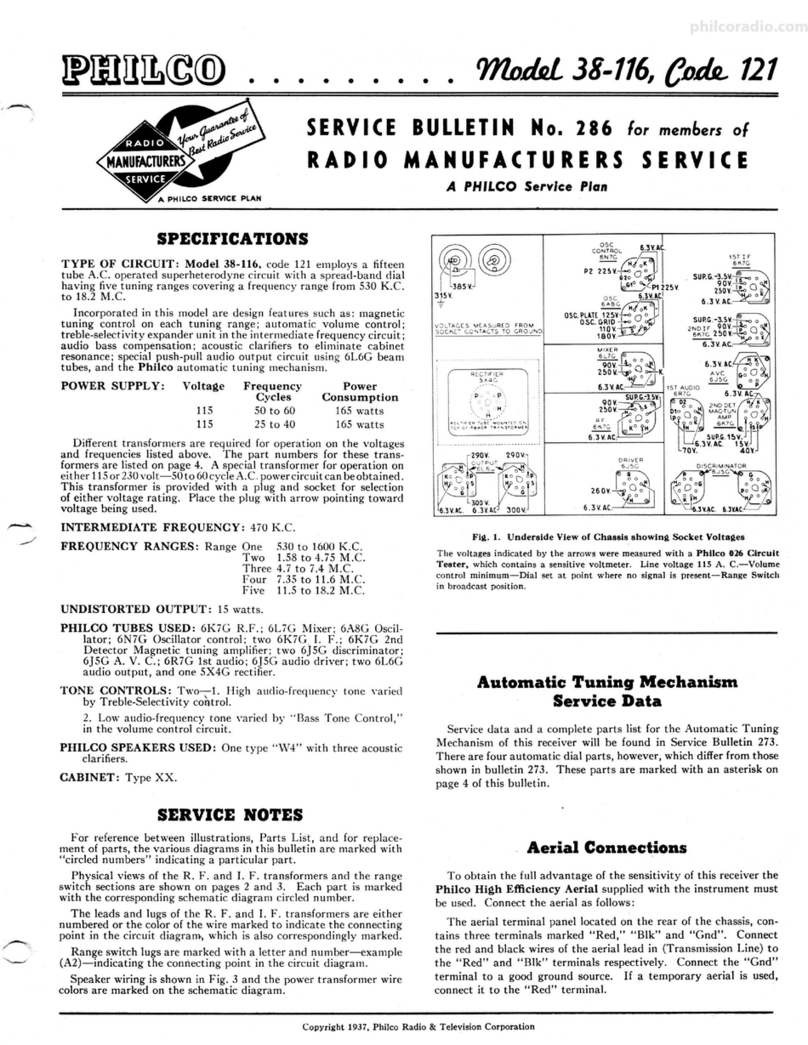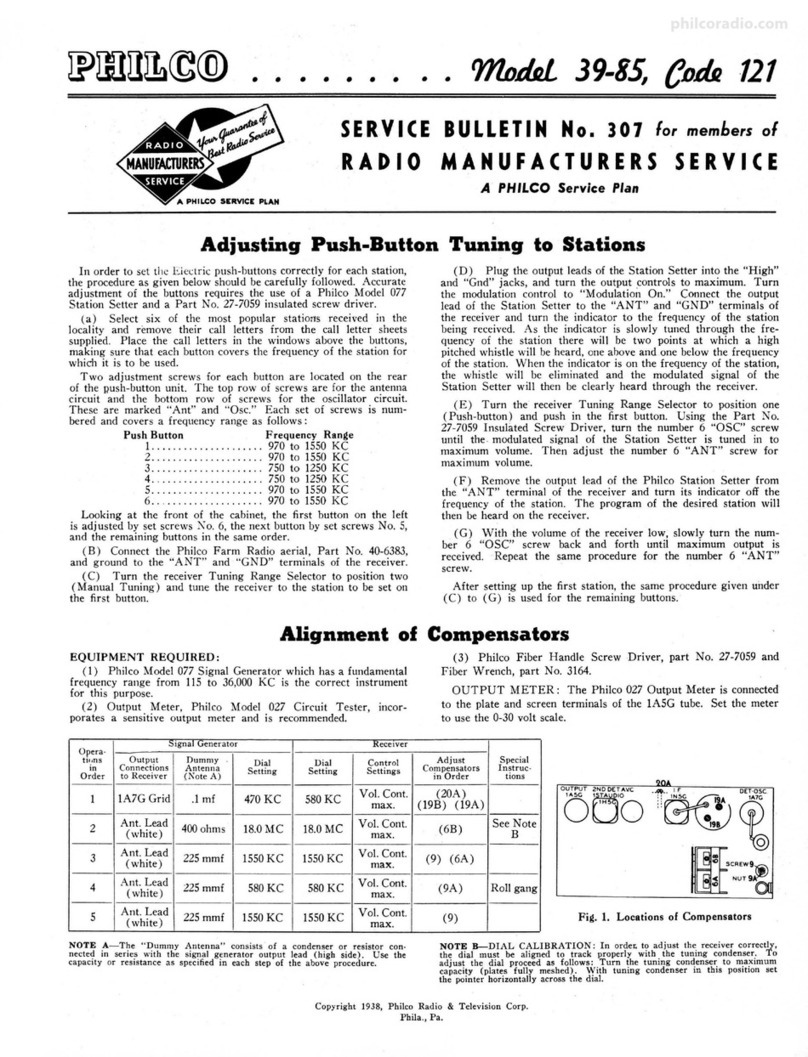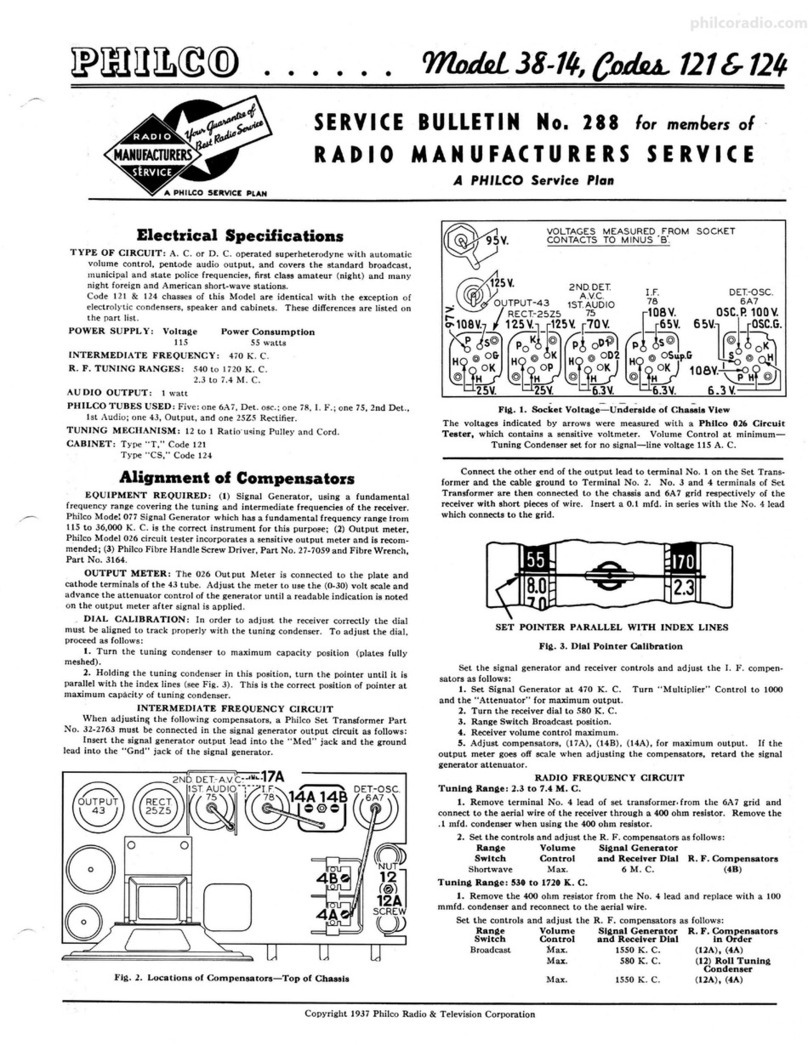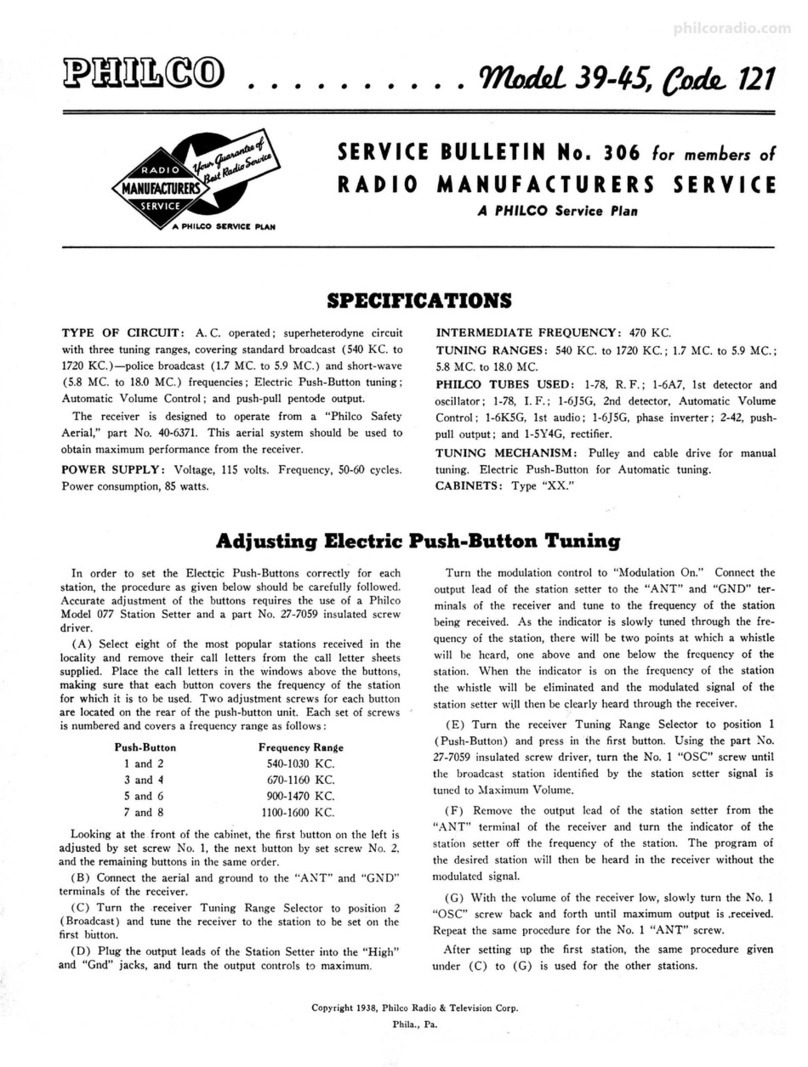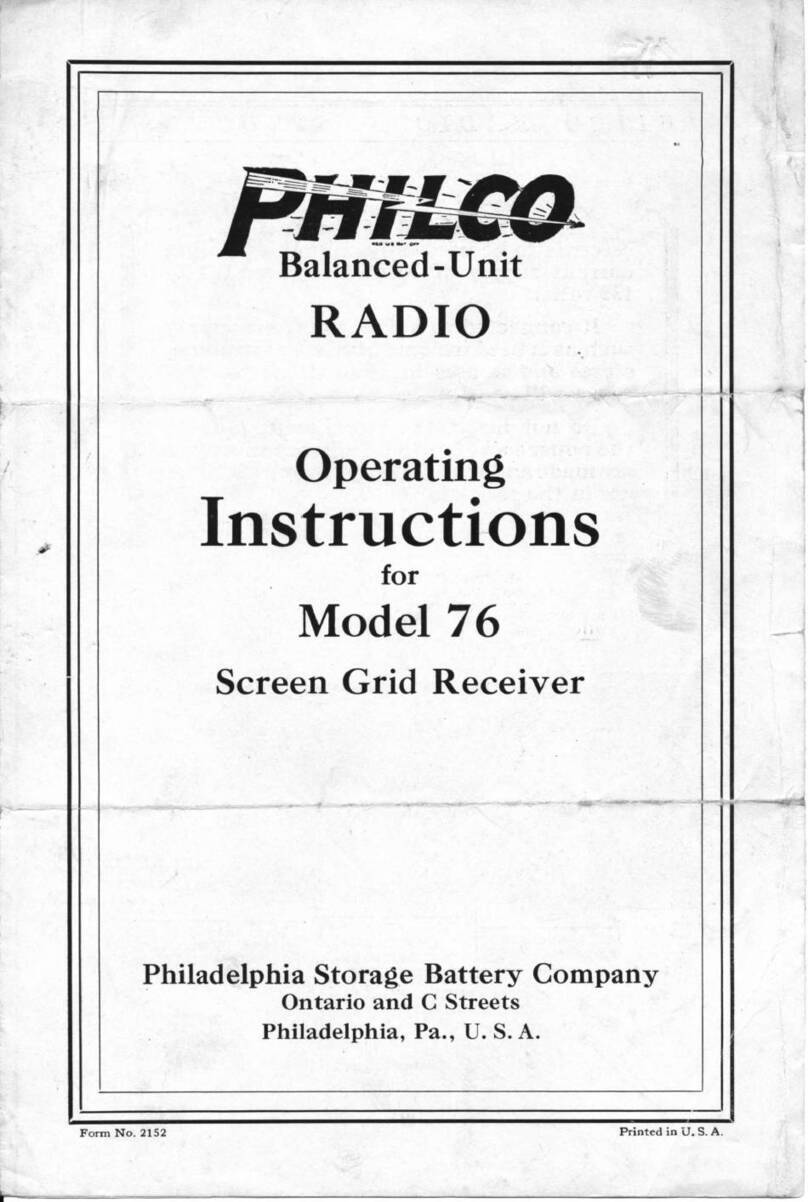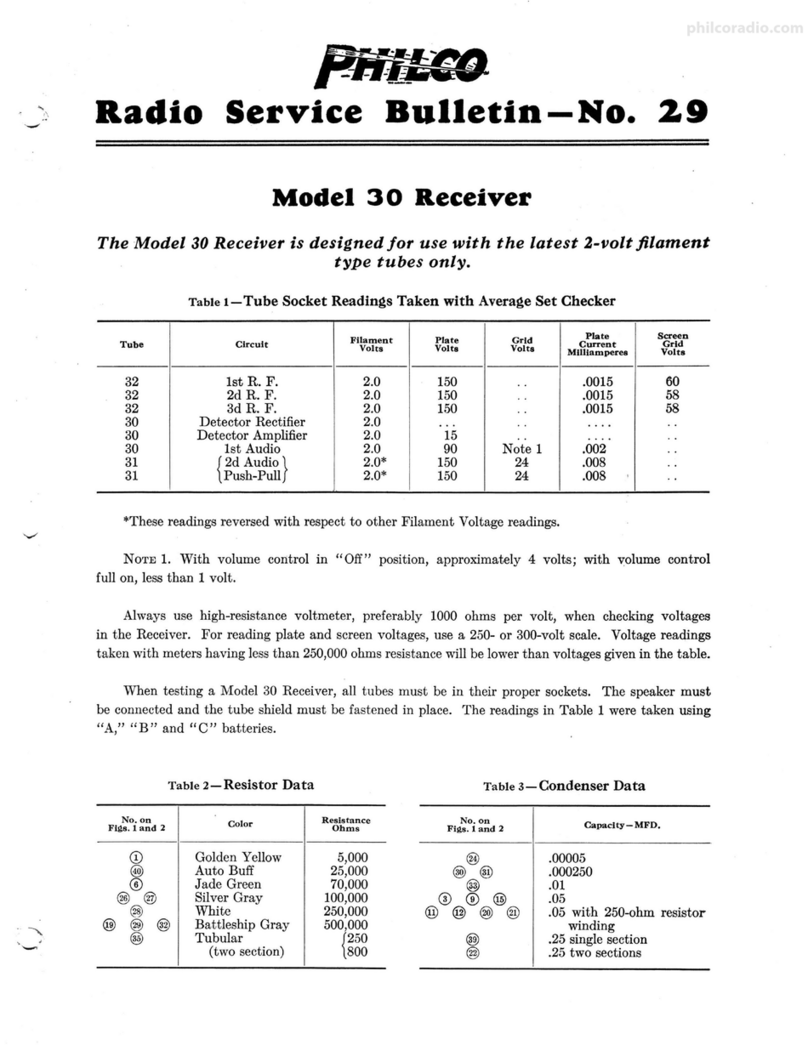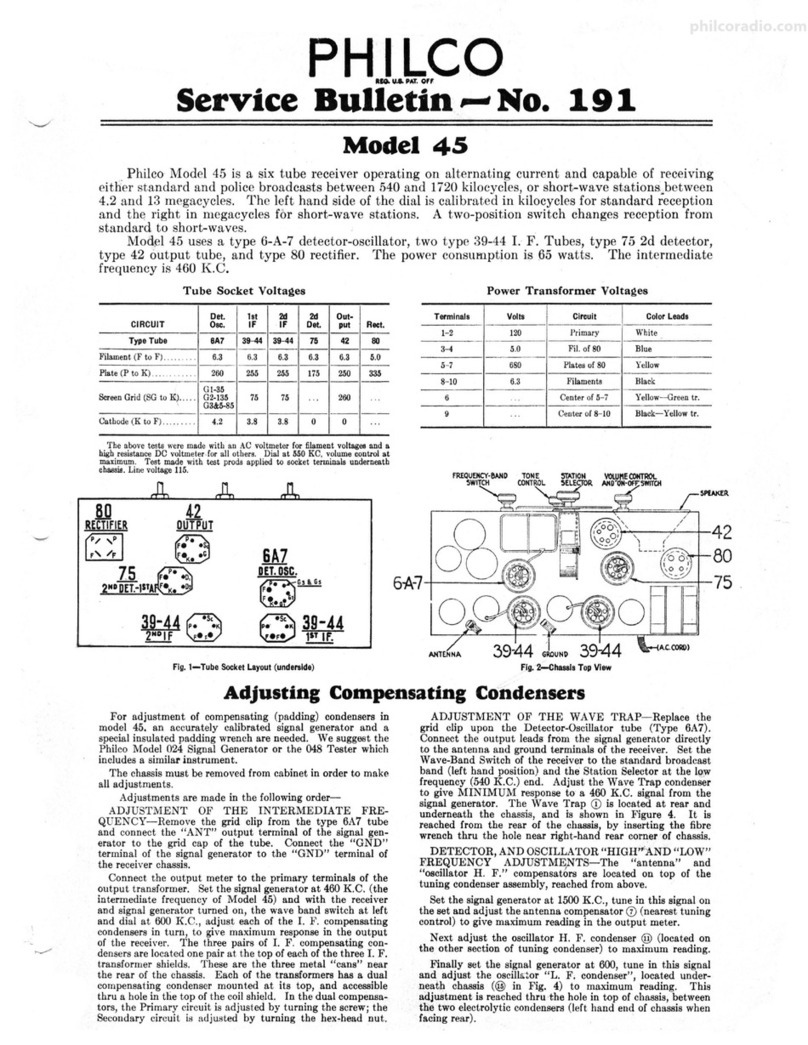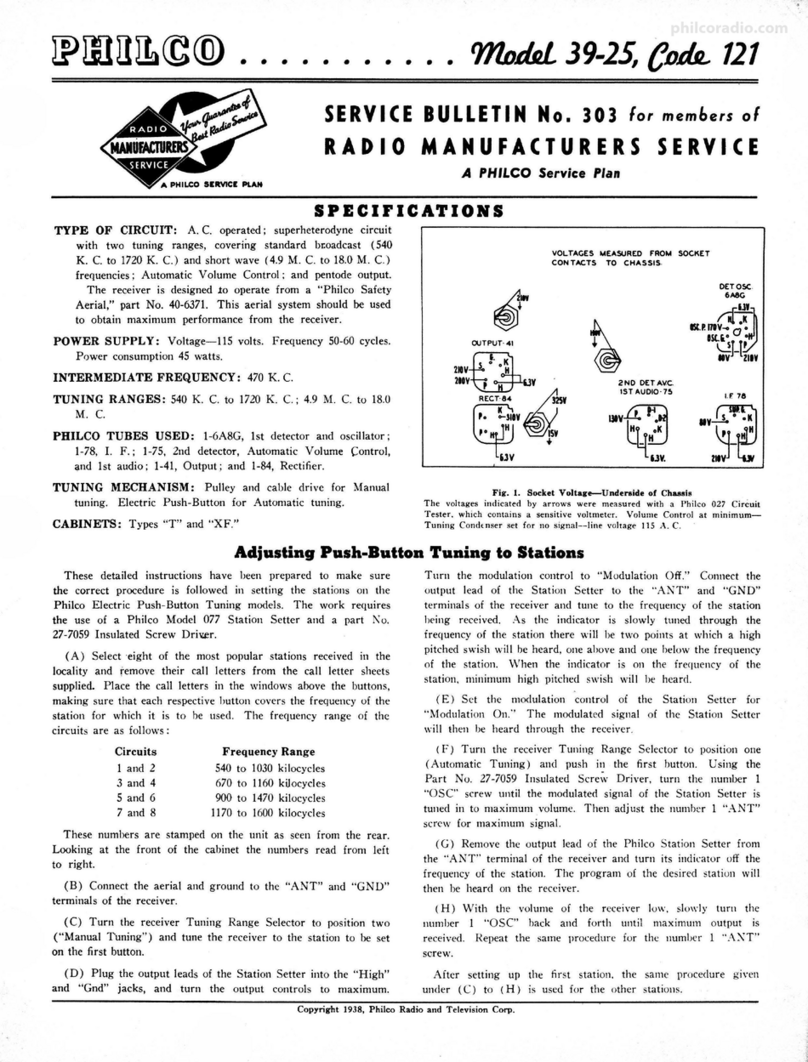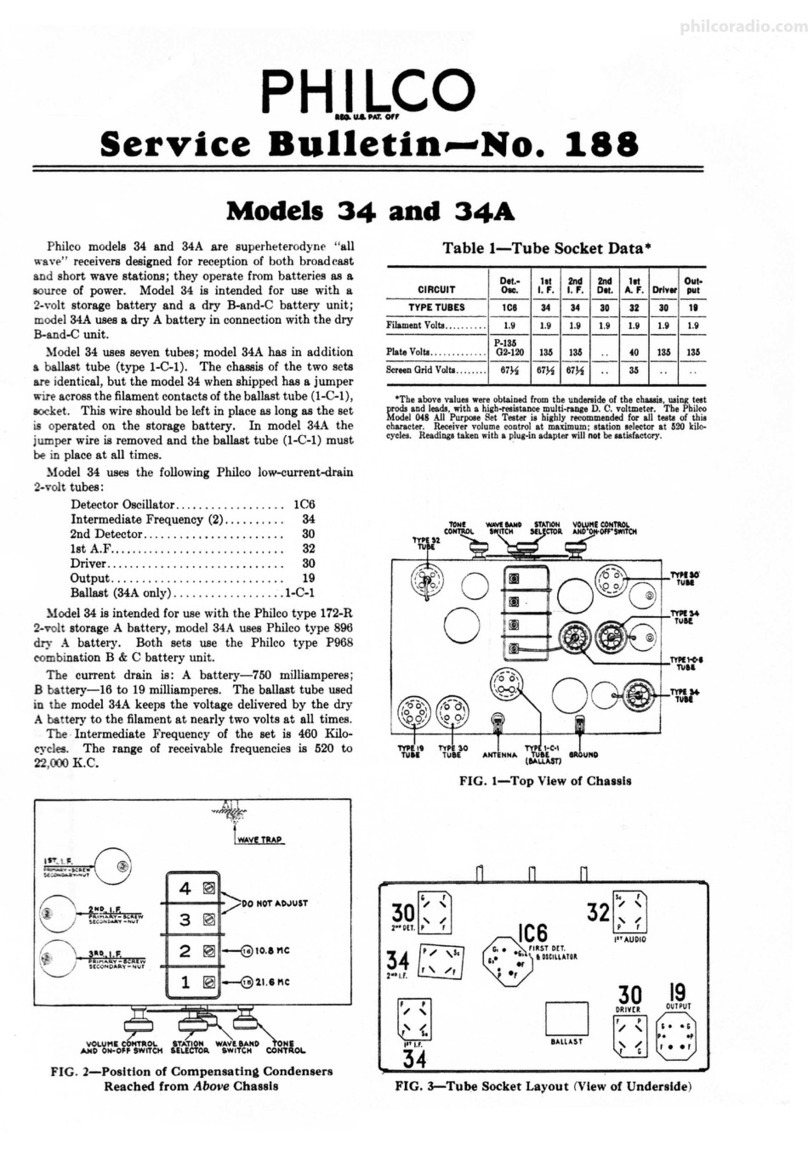
PHILCO NADIO lNSTNUCTIONS
Always regulate thc volume by means of the " volume
control " and the " local-distanee " switch - never by detuning.
The automatic volume control incorporated in this Re-
ceiver tends to equalize the volume of all stations at the
sound level for which the manual volume control has been
set. This prevents the blaring of strong stations during tuning
and reduces the fading of distant stations. With the volume
control in a given position, the reproduction will not vary
greatly in volume, even if the tuning is changed from a weak
station to a strong one or vice versa.
When using the " LOC " post connection instead of an
external aerial, try the attachment plug in both positions in
the wall receptacle. Leave it in the position that gives the
stronger and clearer reception of distant or q'eak stations.
Standard Warranty
We uarrarrt each new Rad,io Receiaer and, STtealcer nl,arru-
factured by us to be free from defects in material and, workman-
slvtp und,er normal use and, suaice, our obligation und,er tluis
uartanty bein4 limited to malcin4 good at our factory or fo,ctmy
depots any part or parts th,ereof which shnll, withtn ninety (90)
days after deliuerg of stcch Receiuer to the original purchaser,
be returned to us with |,ransportation charges prepaid, and which
our examinntion shall disclose to our satisfaction to ha,ae been
thus defectiae; tlvts wamanty being expressly in lieu of aII other
warranties erpressed, or implied, anl, of all otlter obligations or
Iiabil;tties on our part, and, we neither assLrTne rnr autlwrize
any represenlntiue or oth,er person to asstme for us any othnr
Iiabiltty in connection with the sale of our Receiaers or Speakers.
This wananty slwll not apply to ang Receiuer or Speaker
wlvich slwll lnue been repaired or altered outside of our factorV
